Headed to Canada and looking for the best Banff itinerary? Keep scrolling for the ultimate 3 days in Banff! This guide tells you not only what to do in Banff in 3 days, but where to stay, where to eat (top restaurants and sweet treats), how to get around, and all my favorite activities (like all those glassy turquoise lakes!).
If you’re planning a trip to Banff (and the Canadian Rockies in general), you’re in for a real treat. The whole area is full of jewel-toned glacial lakes, cascading waterfalls, majestic mountainous terrain, and jagged snow-covered peaks. Picture perfect postcard views everywhere you look.
And there’s wildlife! Think bighorn sheep, moose, elk, mountain goats, and the occasional bear (yes, I just said bear)!
To put things mildly, I’m ridiculously obsessed with the entire area (exhibit A, B, and C). There’s a reason I’ve been back THREE times (twice in summer and once in winter) – AND I’ve got another trip in the works. I can’t seem to stay away!
Visiting Banff soon?! You’ll probably enjoy these other articles about the area:
- An Epic Canadian Rockies Itinerary (including Banff, the Icefields Parkway, and Jasper!)
- The Ultimate Guide to Banff in Winter (just imagine yourself inside a magical mountainous snow globe)
- A Local’s Guide to Calgary (fun things to do, where to stay, how to get around, and more)
- Road Tripping from Vancouver to Banff (all the best stops along the way)
3 Days in Banff Itinerary Logistics
Banff Itinerary At-A-Glance:
- Day 1: Waterfall Hike, Gondola, and Hot Springs
- Day 2: Glacial Lakes Galore
- Day 3: Lake Louise and Canmore
Where is Banff National Park?
First off – Banff National Park is in Canada, our neighbor to the north! So remember – you’ll need your passport.
Banff, Canada’s first and actually most visited National Park (because hello, it’s stunning), is about 120 km west of Calgary in the Canadian Rocky Mountains.
It’s located on Alberta’s western border with British Columbia. If you’ve never been to Canada before, just know that Banff’s on the left side of the country, although not on the coast.
It’s on the opposite side of the country from Toronto, Montreal, and Quebec City, in case you’re thinking of jamming a bunch of Canadian cities together into one trip.
I’d plan to see Banff, the stunning Icefields Parkway, Jasper, Calgary, and Edmonton together if you’ve got more time and want to explore additional areas in Canada. Leave eastern Canada for another trip – just like the USA, Canada is beyond huge!
How to Get to Banff
If you’re coming from the US, getting to Banff is quite simple.
Since there’s no airports in Banff National Park (or its immediate surroundings), you’ll need to fly to Calgary International Airport (airport code YYC). Calgary is kinda the unspoken gateway to the Canadian Rockies, so you’ll find most people who fly here are actually headed to Banff too!
For reference, it’s approximately 3 hours in the air from San Francisco (SFO), where I’m typically departing from, 5 ½ hours from New York City (JFK), and 8 ½ hours from Miami (MIA). Definitely way quicker if you’re coming from the West Coast like we were.
Upon arrival in Calgary, you’ll need to then get yourself to Banff National Park. Sure, it kinda sounds like a hassle, but I PROMISE you the trip is so worth it. And there’s so many options (all described in detail below).
How to Get from Calgary Airport to Downtown Banff
Public Bus and Shuttle Services:
- Banff Airporter: The Banff Airporter provides a shuttle bus service to and from Calgary Airport, Banff, and Canmore. There’s a ton of scheduled times and you’ll get dropped off right at your hotel in Banff! It is kinda pricey though, at over $150 roundtrip. Do note if you’re staying in Canmore there’s only one drop off, at the Coast Hotel.
- Brewster Express: This is a shuttle service that connects Calgary (with pickups in both downtown Calgary and the Calgary International Airport) to a whole slew of places in the Rockies – Kananaskis, Canmore, Banff, Lake Louise, and Jasper. The shuttle runs year round, although check the schedule because it changes based on the season. It’s a little cheaper at around $55 each way; select your bus time and grab your seat from Calgary Airport to Banff here!
- On It Regional Transit: If you’re coming from downtown Calgary, you can use On It Regional Transit, a convenient bus service between downtown Calgary, Canmore, and Banff. Note that they do not have pick ups at the airport at this time, so not beneficial if you’re not exploring Calgary first. Also, the Banff & Canmore 2022 service only operates seasonally, from Spring to early Fall. The bus isn’t as luxurious as the shuttles and there’s not much space for luggage, but it’s only $10!
Driving to Banff
If you’re renting a car in Calgary, of course you can drive to Banff National Park yourself! The drive is pretty easy, the highways are in great shape and well-maintained, and only takes about an hour and a half. I’ve even made the drive myself in snowy winter weather – the roads were clear and we felt safe the entire time.
Within 45 minutes or so, off in the distance, you’ll start to see the jagged peaks of the Canadian Rockies. No words or photos can prepare you for your first views of the mountains. Utterly spectacular!
There are two routes you can take from Calgary to Banff – the most common being a straight shot down the Trans-Canada (Highway 1), taking about 1 ½ hours.
If you’d prefer a slightly more scenic route, plan to take Highway 1A through Canmore before rejoining Highway 1. It just adds on an extra 15-20 minutes or so. You can even do the scenic route on your way back to Calgary if you’d prefer to get to Banff as soon as possible.
Remember these drive times are without any traffic – there’ll undoubtedly be some in the crowded summer months. Plan accordingly.
Private transfer to Banff
If you’ve got a large family or are traveling with a bunch of friends, it may make sense to book a private transfer from Calgary to Banff. Considering it costs about $150 per person round trip, if you’ve got a large party, it may actually be more cost effective to book your own private shuttle.
The private transfer is also a good option if you’ve got a super early/late flight and the shuttles aren’t operating at times you need them.
When to Plan Your Banff 3 Day Itinerary
The scenery’s stunning year round, but frigid winter conditions mean some activities will close. As noted above, I’ve visited in both seasons and loved both just as equally (for different reasons of course).
This Banff itinerary assumes you’re visiting in summer, as that’s when the lakes are glistening and most people come. Visiting between November and March? Be sure to check out my full guide to Banff in the winter!
Summer
While the most crowded (and therefore most expensive), if this is your first time to the area, I highly suggest you plan your Banff itinerary during the pleasant summer months.
Not only will the lakes show off their distinctive gleaming turquoise colors, but you’ll be greeted with very, very long days! The sun doesn’t set until almost 10pm in the peak of summer over here, meaning lots of time for explorations!
Do note that the weather in Banff is quite temperamental (this is the mountains afterall!), so you’ll want to pack a light jacket for the cool mornings and chilly evenings.
Spring/Fall
The Canadian Rockies see over 4 million visitors a year, and I bet at least 75% visit from June-August. With that being said, a visit in late Spring or the fall may be your best bet if you’re not a fan of the masses.
Do note that many lakes don’t fully thaw until late June, so expect icy bits in the spring, with possible snowfall as early as late September/October! Bring a bunch of different clothes (the weather is wacky up here), check the weather forecasts before your trip, and you’ll be fine!
Looking to visit when the leaves turn colors? The larches are absolutely stunning in late September – a visit to Banff in fall is so high on my bucket list.
Winter
If you’re planning to visit Banff in the frigid winter months, head on over to THIS POST for lots of pre-planning info. I visited Banff and the surrounding areas in February, and most definitely learned a lot!
Let’s just say I was way colder than expected, despite packing layers upon layers for the snow and below 0 temps. But frolicking in a permanent snow globe is one of my favorite things, so I can’t be mad about that!
Remember – the lakes will be completely frozen over come mid-November or so. If you’ve got your heart set on those glistening glacial waters, come in summer.
Is 3 Days in Banff Enough?
3 days in Banff will probably satisfy your desire for mountainous landscapes and glacial lakes. BUT you’ll be planning another trip back before you even leave your first! Trust me – I’ve been three times and it’s still not enough.
With three full days in Banff, you can easily see all the area’s highlights. If you’re planning on doing a longer hike or two, plan an extra day or so in the park (or skip a few shorter walks/activities). And remember to bring along some bear spray, sold at numerous shops in town (better to be safe than sorry!).
Do note that I typically don’t include long, strenuous day (or multi-day) hikes into my travel plans. They just aren’t my thing (while I’d love to say I’m an avid hiker, my legs give out after a few miles). If you’re planning to spend a few days hiking and want to see the bulk of activities on this 3 day Banff itinerary as well, I’d add a few extra days to this pre-planned itinerary.
You’ll also be exploring Lake Louise and Yoho National Park in this Banff itinerary – two other spots you definitely don’t wanna miss. You can probably also squeeze in a short visit to Canmore as well during your 3 days in Banff if you plan it right.
How to Get Around During Your 3 Days in Banff
Driving in Banff
While you don’t necessarily need to rent a car, if you wanna check out all the things on this Banff itinerary, you’ll find having a car much easier. Renting a car gives you ultimate flexibility, and you don’t need to rely on the bus. Parking is a challenge in and of itself… but we’ll get to that later.
Plus, if you’re planning to take a longer Canadian Rockies road trip, you’ll undoubtedly need a car. Because, well, it’s a road trip!
The three times I’ve been to Banff we’ve rented a car at the Calgary Airport. Renting a car in Calgary is pretty straight forward, as there are numerous car rental agencies both at the airport and right outside. We typically book here and find great deals → for this particular trip to Banff, we saved over $100!
For the lowest price, make sure to only input the times you actually need the car, and consider renting from a company not within the airport itself (we took a free shuttle to an outside company to get our car).
A few things to know about driving:
Many (if not all) car rental agencies in Calgary will ask for proof of insurance upon pick up. Be prepared to show your own, or pay up at the counter for over priced insurance through the rental company. If you’ve got a travel rewards credit card (like my favorite, the Chase Sapphire Preferred or Reserve), it most likely includes car rental insurance – but of course confirm beforehand.
Parking absolutely sucks. This is the biggest negative to driving yourself – you’ll need to find a place to park your car. And in a wildly popular destination like Banff? Way easier said than done.
As noted above, parking at the most popular spots (like Lake Louise and Johnston Canyon) will be crazy difficult. Parking even got so insane at Moraine Lake that Parks Canada decided to stop letting people drive there themselves!
Even if you have a car, you may want to use the bus or shuttle service at times. Ask your hotel and they’ll be able to help you out with public transit!
Public Transit:
Within Banff Town and nearby: No car? No problem. There’s plenty of hotels right in downtown Banff, and you can get almost anywhere in town with Roam Transit, the local bus system. The bus also goes to popular destinations like Banff Upper Hot Springs (Route 1), the Banff Gondola (Route 1), Bow Falls (Route 2), Cave & Basin (Route 4), Johnson Lake and Lake Minnewanka (Route 6).
Lake Louise: I recommend taking the shuttle to Lake Louise, especially if you’re visiting in the (exceptionally) crowded summer months. And yes, this means you won’t have to deal with parking, which is an absolute nightmare… just trust me on that. Get way more info about driving/parking at Lake Louise and the Lake Louise shuttle service here.
To Moraine Lake: Oh, how things have changed. You used to be able to drive yourself to Moraine Lake, but Parks Canada closed the Moraine Lake Road to personal vehicles in 2022 (and yes, no matter how early you get there). It’s kinda a bummer, but this means its not absolutely imperative to get to the parking lot at 3:30am like in the past!
With no access to private vehicles, you’ll need to find another way there.
- From the town of Banff: take the Moraine Louise Express (Roam Route 10) for $10
- From Lake Louise: take the Parks Canada Shuttle (direct from the Park and Ride at the Lake Louise Ski Resort) for $8
Or make things easier and book this double-decker shuttle – it takes you to both Lake Louise and Moraine Lake!
I’m not always a fan of those pre-packaged bus tours, but sometimes they really come in handy. And Lake Louise and Moraine Lake are two of those places.
You’ll be able to visit both stunning lakes, and not have to worry about parking (or waking up at the crack of dawn) at either! Remember – parking’s a nightmare at both, so having someone else do the driving/parking sounds really appealing. The bus is even allowed in when the road is closed to cars!
And this tour is actually a small-group tour, so you won’t be with dozens and dozens of others in the bus. If this sightseeing tour to both Lake Louise and Moraine Lake was offered when I visited, I would have 100% signed up. I literally can’t think of any cons!
Read reviews and sign up here! If you book one activity in Banff, I’d make it this one.
Where to Stay in Banff
There’s actually 3 possible areas to stay when visiting Banff National Park, depending on where you wanna base yourself:
- Downtown Banff
- Lake Louise
- Canmore
All areas have their positives and negatives, and you can’t go wrong with any.
No matter where you choose to stay, plan to book in advance. If you’re traveling during the popular summer months of June – September, you’ll NEED to book accommodation at least 2-3 months out. You may have some luck with last-minute bookings in May or October, but don’t count on it.
Downtown Banff
The town of Banff is a super central and super lively location, with lots of bars and restaurants in the cutest little downtown area. It’s even walking distance to a whole bunch of walking trails, Banff Avenue (the main street), and some fun microbreweries and distilleries.
There’s a whole bunch of accommodation options in the town of Banff itself, ranging from simple shared hostel rooms to an opulent and luxurious castle. Yes, an actual castle. Plan to book in advance regardless of where you wanna stay – the hotels in downtown Banff get sold out months in advance.
A few I recommend:
Moose Hotel & Suites: One of the best value hotels in downtown Banff, although with the two rooftop hot tubs, an indoor pool, and a spa, it feels a tad more luxurious. And it’s located right on Banff Avenue, meaning you can walk to all the bars and restaurants! The rooms are pretty basic, but the location and extra amenities can’t be beat!
The Rundlestone Lodge: With views of the Canadian Rockies and less than a 15 minute walk from downtown Banff, Rundlestone’s not a bad option! There’s even an indoor pool, perfect in the winter when it’s all snowy and chilly.
Fairmont Banff Springs: This wouldn’t be a complete Banff itinerary without at least mentioning the Fairmont Banff Springs. I mean, it’s a castle, y’all! What’s not to love?! A luxury mountain resort right in the middle of town? Sign me up!
And plus, there’s a championship golf course during the summer and unparalleled skiing in the winter! I promise you I’m staying here next time I visit Banff.
Yes, it’s beyond pricey, but if you can score a deal, it’s the ultimate splurge for a special occasion!
During my winter visit to Banff I had the pleasure of taking a dip at the Willow Stream Spa (located within the hotel), and if that’s any indication of the level of class of the hotel, you know I’m there. Definitely worth the splurge for a night or two!
Samesun Backpackers Banff: There’s no way around it – accommodation in Banff is expensive. One way to combat the crazy price tags is by staying in a hostel with other visitors. If you’re looking for cheapie-won’t-break-the-bank accommodation options, Samesun is it. I’ve stayed here twice so far, and have to say, it’s not terrible at all. The hostel is located a few minutes from the center of town, with a fun bar environment, daily local activities, and helpful staff.
Find more hotel options in Banff here.
Lake Louise
Lake Louise is easily the crown jewel of the Canadian Rockies. It’s absolutely breathtaking, and once there, you’ll probably never wanna leave.
BUT it gets crowded, like insanely crowded. By staying at Lake Louise you’ll be able to get to the lake early in the morning before the buses start arriving and the entire place turns to total chaos. And who doesn’t like to wake up with the Lake at their doorstep?
Fairmont Chateau Lake Louise: There’s a reason this hotel is on everyone’s bucket list. It’s located directly on the lake and most of the hotel rooms feature absolutely stunning views of either the mountains or lake below.
Imagine waking up and seeing that glistening turquoise water before you even brush your teeth. That’s my kinda luxury. Even if you’re not staying here, I urge you to wander around and have a meal or two.
Canmore
Canmore’s another mountain town (actually a small former coal mining town), about 20 minutes southeast of Banff. Many people prefer to stay in Canmore – it’s less expensive than staying in Banff itself, and the town has a more local vibe.
Note while it’s not terribly far from the attractions in Banff, staying in Canmore means you’re farther from Lake Louise and the glacial lakes up north. You’ll pass Canmore on your way to Banff from Calgary, so you can always swing by for a walk/meal on your way to/from the airport if you don’t wanna stay here!
A few recommended hotels:
- Lamphouse Hotel (a rustic, country lodge that’s also super stylish)
- Canmore Downtown Hostel (no frills, and best budget accommodation in Canmore)
- The Malcolm Hotel (luxury with an outdoor swimming pool, hot tubs and BBQ facilities)
Calgary
Have an early morning flight out of Calgary after your 3 days in Banff? You may wanna stay at an airport hotel in Calgary. We’ve stayed at Hyatt Place Calgary Airport – it was your typical Hyatt – very clean, staff very friendly, and a free breakfast buffet, all at an affordable rate. Would recommend if your travel plans see a relatively early flight like ours did!
We Ubered into town the night before and I don’t remember it costing too much. Find more hotel options in Calgary here.
If you have longer than 3 days in Banff, I recommend splitting your time staying between Banff and Lake Louise. Early mornings are oh so peaceful at the lake, especially if you’re visiting in shoulder season.
Other Important FAQs To Plan Your 3 Days in Banff
Banff is a National Park. I don’t think everyone realizes that! Meaning you’ll need to purchase a National Parks pass in order to visit (and no, your America the Beautiful Pass will not get you into parks in Canada, sorry!).
The cost of entry into the National Parks (Banff, Jasper, Yoho) is determined by how many days you’ll be in the parks, as well as how many people are in the car. For example, the cost of a day pass is $10.50CAD, meaning if you’re in the parks for 4 days, it’ll be $42CAD per person.
However, if you’ve got more than 2 people in your vehicle, there are savings to be made (a pass for 2 people vs 4 people is the same price – $84CAD). So gather up all your travel besties!
Depending on how long you’re visiting the parks for, how many people you’re traveling with, and if you’re pretty sure you’ll be returning within the year, it may make sense to purchase an annual Discovery Pass for $145CAD. This website will recommend the best value option for your group.
In addition, be sure to purchase passes ahead of time so you don’t waste precious minutes waiting for them upon arrival, as the lines can get mighty long (especially in the popular summer months).
There will be animals – keep them wild. With that being said, never do anything that may harm yourself or the animals. This includes petting/feeding/chasing/touching any animal. If you see an animal, stay in your car. Hiking? Carry bear spray with you. More info below.
Be prepared for all kinds of weather – no matter the season. Banff lies in the Canadian Rockies, and has typical mountain weather (like Denver, Colorado and Jackson Hole, Wyoming in the states). Snow can fall as early as September (yes, it’s happened!), while intense thunderstorms are not uncommon in summer.
Be aware of gas stations and your gas meter. Although there are plenty of gas stations in Calgary, there’s not as many along the road once you leave the city. There are a few in Banff and just one in Lake Louise. If you’re headed up the Icefields Parkway, there’s one at the Saskatchewan Crossing (avoid using this as it’s crazy expensive), and then a few up in Jasper.
To be on the safe side, I’d always make sure you’ve got at least a ¼ of a tank — especially if you’re visiting in winter.
Parking sucks. We already went over that – but I want to make sure you really understand just how bad it can get. Parking’s an absolute nightmare, especially in summer. You gotta get to places early in order to grab a coveted parking spot. Plan to start your day on the earlier side to see the most popular places (Lake Louise, Moraine Lake, Johnston Canyon), then relax later on in the day.
An important note on wildlife
You’re in the wilderness out here → expect to see some wildlife. Always carry bear spray with you and always go hiking in groups (at least 2 people). Always be alert for wildlife, as they may surprise you, especially while hiking (always stay on the trails) and even while driving around the parks.
Be sure to educate yourself before you run into wildlife, and always keep a safe distance. NEVER attempt to pet/feed/chase/touch any animal, no matter how harmless or cute or docile they may look. And never step out of your car when bears are present, promise me that. Photos are great – but never at the expense of your life.
Remember, bears are living creatures, and can/will attack when threatened. Keep your distance and if you feel the need for better photos, bring along a zoom lens and crack open the window (when safe).
On my few visits to the Canadian Rockies, I’ve seen bighorn sheep, a bunch of black bears, elk, and even a few grizzlys. With just a few days in the area, you’re bound to see some wildlife. Be on the lookout and stay safe. And don’t go out of your vehicle when bears are present – just don’t do it! I can’t stress that last point enough!
There’s typically more wildlife on the Icefields Parkway and up north in Jasper National Park, but you always wanna be prepared no matter where you are. If you’re doing any hiking, carry some bear spray with you (sold at all shops in Downtown Banff, although they do seem to run out…).
If you’re really interested in seeing some bears (in the wild) and wanna learn about the different animals in the area, I highly recommend booking an evening wildlife safari! The guides know the best spots to look for wildlife!
Finally, what you came here for – the perfect 3 days in Banff itinerary!
Psst: This Banff itinerary assumes you have 3 full days in the area. Meaning you got here the night before and can start your first full day in the morning. You can probably squeeze everything in on Day 1 if you arrive in the AM, but depending on your travel style, you may feel kinda rushed.
This is technically a summer Banff itinerary, as the lakes will be frozen come November/December. Visiting in the winter? There’s tons to do here – and sipping hot chocolate by the fire with a view of the snowy mountains is oh so magical. Check out my full Banff winter guide – full of everything you need to know, plus all my favorite winter activities.
Rocky mountain peaks, a picturesque (albeit crowded) mountain town, glistening glacial lakes, and an abundance of wildlife – coming right up! Banff is quite possibly one of my favorite places in the entire world. And I’ve been lucky to visit some pretty epic destinations. Let’s get to it!
Best 3 Days in Banff Itinerary
Day 1: Waterfall Hike, Gondola, and Hot Springs
Stop 1: Johnston Canyon Hike
If rushing waterfalls, limestone cliffs, and turquoise pools get you going, plan a morning at Johnston Canyon. Note that the farther you venture, the more you’ll see. You can hike to the lower falls in 1 easy mile (round trip), upper falls in 3 miles (round trip and a bit more strenuous), and the ink pots in 6.5 miles (plan at least 3 hours for this roundtrip trek).
We managed to trek to the lower and upper falls in roughly 2 hours or so, and most definitely recommend this! The hike to the falls is relatively easy, partially on wooden/steel catwalks and paved roads. In winter, it’s covered in snow and a whole different spectacle. Think ice crystals and frozen waterfalls at every turn; it’s like stepping into Narnia.
You’ll want to get here early if visiting in summer (yes, we already established it’s busy, busy, busy this time of year), as the parking lot gets filled up quite early, as in we arrived at 9am and it was full. There’s extra parking down the road, don’tchu worry.
In order to get to Johnston Canyon you’ll be taking the Bow Valley Parkway (1A), which is known to be filled with wildlife – be sure to keep a close eye out for any animals on the road!
Stop 2: Sunshine Village Gondola or Lake Minnewanka and Two Jack Lake
Depending on your preferences, and how long you hiked at Johnston Canyon for, you may even be able to get in both these activities!
Sunshine Village Gondola: Continue the day at Banff Sunshine Meadows, a ski resort on the outskirts of town, known for its intense ski trails come winter and moderate hikes once ski season is over. This place is pretty jam-packed come winter, but you’ll find it relatively quiet in the hot, summer months.
We took the gondola up, and loved walking throughout the wildflowers. We almost decided to take a short hike to one of the lakes for closer views, but quickly decided against it once we heard there’d been a grizzly sighting near the path just the day before (and we had no bear spray with us!).
The view from the lookout point was satisfying enough – just check out that photo! And don’t be like us – be sure to bring along some bear spray if you’re planning a hike!
Lake Minnewanka and Two Jack Lake: Our first set of lakes in Banff – I mean, that’s a huge reason you’re coming to this region, right?! And PS – some even prefer these two lakes to Lake Louise (although I’m semi-obsessed with the latter).
The way the mountain reflects in the glacial water is absolutely mesmerizing, and luckily, there’s boats that can take you out on the lake! Be sure to book online in order to bypass the (possibly very-long) cue. It’s a favorite activity during the warm, summer months!
If you don’t have time for a boat ride, just stroll along the shore (minimal physical effort required). Wanna stretch your legs? There’s a great trail – be sure to watch out for the mountain goats and chipmunks!
Visiting in the popular summer months? Consider taking the bus straight from Banff Town, as it’s exceptionally easy (and parking can get quite difficult due to crowds). Do note the lake will be frozen over if you’re visiting in the (beyond)-chilly winter months – still beautiful nonetheless.
Stop 3: Banff Town Center and Activities
Banff is the epitome of a true mountain town – with peaks dominating its skyline, chateau-style hotels, lots of souvenir shopping, and tons of wildlife (yes, bear spray is much-needed over in these parts).
Can’t find what you’re looking for? Just walk up and down the side streets – you’ll find BeaverTails (don’t miss this iconic greasy treat), homemade fudge, ice cream, and possibly even a few deer! Just be aware you won’t be the only one going for a stroll – summer sees a swarm of visitors, so be prepared to dodge some crowds along the way.
Don’t miss out on the poutine, cheese (and chocolate) fondue, and my favorite breakfast/coffee spots – Whitebark Cafe, Wild Flour, and Good Earth Coffeehouse.
Some of the best activities in and around Banff Town:
Bow Falls Viewpoint: This scenic spot is so close to the town of Banff it’d be just plain old silly to skip it (a quick 5 minute drive or a lovely 20 minute walk if the weather’s nice). And get this – the waterfall has even been featured in several 1950’s films; remember Marilyn Monroe in River of No Return (yup, that’s Bow Falls!).
It’s peaceful with sounds of the soothing water (with the roar of the water over the falls as well); a great place to enjoy nature! Yes, most of Banff is just that, as the entire area’s full of scenic beauty. There’s benches and tables around the park, making it the perfect spot for a late afternoon picnic. Visiting in winter? → expect the falls to be frozen (only making them even more spectacular)!
Surprise Corner: You’re driving and driving along Tunnel Mountain Road, and then, BAM! There’s the Fairmont Banff Springs Hotel (and Sulphur Mountain) in the distance. You’ll only need a few minutes over here to check out the view, but boy, is the short drive worth it. There’s no sign here, so just follow your Google Maps and you’ll see it straight away.
Tunnel Mountain: Lace up your boots, we’re going hiking! No really though, Tunnel Mountain is one of the best day hikes in the Banff area – and you can access it right from downtown Banff! There are a bunch of switchbacks, and you’ll likely be breaking a sweat, but the views from the summit are worth the effort.
Banff Gondola up Sulphur Mountain: One of the most popular things to do around here is the Banff Gondola, a scenic cableway heading to the summit of Sulphur Mountain to reach its 360 degree rooftop observation deck.
From up here you’ll get panoramic views of the town of Banff, stunning Bow River, and the surrounding mountains. We were in such awe the entire time; pictures do not do this place justice (take my word for it).
We found the best views by walking a bit further along the path, on the Banff SkyWalk Vista Trail, where thankfully the crowd dispersed quite a bit. We even saw a few bighorn mountain sheep up here, casually strolling around and posing for photos.
Do note that it’s kinda expensive to take the Banff Gondola, with prices starting at $55CAD. If you wanna slash the cost of that admission ticket, plan a 2 hour hike up the summit of Sulphur Mountain, and get the same views fo’ free! Make sure you buy tickets well in advance, as they sell out fast in the busy summer months. It’s one of the most desirable Banff activities for a reason – great views and no hiking!
This moderately-strenuous hike (6.8miles of a series of switchbacks) provides stunning views of Bow Valley almost the entire way, but it’s not for the faint of heart. On my first visit to Banff, I hiked up (wanting to save the cash for things like poutine and beaver tails), while I took the gondola the last two times.
Depending on what month you visit, the gondola and parking lot may be exceptionally crowded (especially in prime summer months). We had to park a bit far, but trust me – no matter the season, the gondola is one activity you don’t wanna miss (if you like nice views and all…).
Insider Tip – it gets chilly up here! Expect the temps to drop quite a few degrees once you reach the top of the gondola (yes, in both winter and summer). Had I known that, I may not have worn a dress, as I got goosebumps quite quickly!
Stop 4: Banff Upper Hot Springs
Finish off your first of 3 days in Banff with a relaxing soak in the hot springs (about 2 minutes away from the Banff gondola). I mean, what could be better than soaking in a warm bath with 63,537 of your closest friends? Nothing, as long as said bath is nestled in the Canadian Rocky Mountains with views of Mt. Rundle across the valley.
I’ve visited twice (once in winter and the other in the heat of the summer), and have to say that the Upper Hot Springs are even more spectacular when the temps are below zero (and yes, your hair will freeze and turn gray – it happens to everyone, and returns back to its normal state quickly after leaving).
Be prepared to wait in line, as the hot springs are a popular attraction no matter the weather. Bring your own bathing suit if you aren’t keen on donning one of their 1950’s vibes bathing costumes (but do know this is an option if you decide you spontaneously need a dip).
Stop 5: Dinner in Banff Town
There are a ton of restaurants right in downtown Banff on Banff Avenue. Here’s a few I recommend:
- Sky Bistro: Located on the top of Sulphur Mountain, you’ll need to either hike or take the gondola up! But this just means ridiculously amazing views!
- The Bison: Expect a seasonal menu with high-quality farm-to-table food. It’s easily the best spot for brunch in Banff on Sundays.
- Park Distillery: A modern mountain interior serving modern camp food with a twist. Think short ribs, burgers, cornbread, baked beans, and even s’mores! The spirits are even distilled with Rocky Mountain water – so cool!
- The Grizzly House: You come to The Grizzly House for one thing and one thing only – FONDUE! Traditional Swiss cheese fondue, beef and lobster fondue, Toblerone chocolate fondue, and they’ve even got exotic meats if you wanna try some.
And whatever you do, save some room for dessert! My two top choices:
- BeaverTails: essentially fried dough with a whole lotta sugar (and toppings of your choice), hand pulled to resemble the long, flat tail of a beaver
- Ice cream from COWS: the most famous ice cream in Banff! It’s super creamy; try the Nanaimoo Bar flavor!
Day 2: Glacial Lakes Galore
Psst – if you don’t wanna wake up at the crack of dawn for sunrise at Moraine Lake, you could easily switch some things around on Day 2 of this Banff itinerary. Just make sure you purchase your shuttle ticket in advance (more info below).
Stop 1: Sunrise at Moraine Lake
Ohhh – Moraine Lake. I get giddy just thinking about those majestic turquoise views and craggy peaks in the distance.
Out of all the glacial lakes in Banff National Park, Moraine Lake is by far the most picturesque (and many even call it more spectacular than Lake Louise, myself included). BUT it’s kinda a b*tch to visit (you heard that right).
Moraine Lake isn’t a lake you can just decide to visit on a whim – you need to plan in advance. Thankfully, there’s quite a few ways to get there (just be sure to book ASAP if you wanna snag a bus ticket for sunrise).
- Early Bird Bus: There’s another way to visit without the parking nightmare, although it’ll still be a very early morning wake up call. Not many take advantage of this, but there are early bird buses departing from the overflow parking lot of Lake Louise right off the main road.
These buses will take you directly to Moraine Lake for just $8 (running every half hour from 6 AM to 8 AM starting on June 24; be sure to check the schedule in advance). This way, you don’t need to get there at 4am, and don’t even need to worry about parking in the Moraine Lake lot at all.
- Shuttle Bus from Lake Louise: Not up for that 5am wake-up call? Don’tchu worry – there’s another way! You can plan to take the shuttle bus from Lake Louise (direct from the Park and Ride at the Lake Louise Ski Resort) to Moraine Lake, but be sure to get your ticket in advance.
- Shuttle Bus from downtown Banff: Walk down Banff Avenue and you’ll undoubtedly run into the bright banners for shuttle tickets to Moraine Lake. They couldn’t make it simpler than that! You’ll take the Moraine Louise Express (Roam Route 10) for $10.
- Small-Group Bus Tour: As mentioned before, there’s a sightseeing bus that’ll take you to both Lake Louise and Moraine Lake. Since parking’s a nightmare at both, you won’t have to worry about finding a spot when you book this tour. The bus is even allowed in when the road is closed to cars! That’s worth the cost of the tour alone! Read reviews and sign up here.
- Drive: Note that as of 2022, you CANNOT access Moraine Lake in a private vehicle. Yes, this means you CANNOT drive there yourself, no matter how early you get there. The parking lot is closed to all personal cars/vehicles. You’ll need to take a bus — plan this in advance.
Once you arrive at Moraine Lake, plan to climb up the large rock pile, as that’s where the famous lookout spot is located (and where these photos were taken). This view, the lake surrounded by the Valley of the Ten Peaks, is actually one of the most photographed images of nature in the world. The world. Aka don’t snooze your alarm!
The hike only takes a few minutes (15 minutes tops), and despite what others say, the path is pretty well-marked and clear. I climbed up in Converse and was just fine.
You can also rent a kayak over here, but in my honest opinion, the most rewarding views are from up above. From up here, you’ll get to witness the snowy peaks of the mountains mirrored in the still turquoise waters below; it’s an absolutely mesmerizing sight. Promise me you won’t forget your camera.
Stop 2: Emerald Lake in Yoho National Park
Ohhhh, Emerald Lake. Possibly my favorite of all the alpine lakes in all of Canada, even more so than the stunning Lake Louise (bold statement, yes I know). A few hours will be sufficient, but make sure to get an early start to the day to reach the lake before the masses arrive (and they do so in bus loads)!
Trust me, after seeing the glistening, emerald waters with the greenest pine trees reflecting in the water, you’ll never want to leave. Happened to us! My friends had to literally drag me to the car, that’s how much I loved it.
Be sure to take a walk around the perimeter, as you’ll find yourself away from the crowds with the place almost to yourselves.
And plus, despite the high price tag, renting a canoe and paddling the lake is high on my bucket list. We hadn’t accounted for the time we’d need to do so, so unfortunately missed out on this (there’s always a next time for us)!
You can also make a short stop at Takakkaw Falls in Yoho, although we did not have time for this (we spent too much time gawking over the water at Emerald Lake – figures).
A stay at Emerald Lake Lodge, a peaceful resort overlooking the lake, is high on my bucket list.
Stop 3: Peyto Lake (Icefields Parkway)
I’m sure you’ve seen photo after photo of this stunning glacial lake, as Peyto Lake is alllll over social media. You won’t wanna miss this spot, I can promise you that! It’s easily one of the most famous lakes in Banff National Park – and for good reason!
After being closed for over 2 years, and with over $2.9 million CDN invested by the Government of Canada to support infrastructure work at Peyto Lake, it’s finally reopened to the public! This means easier parking, new restrooms, more signs, and a larger viewing platform.
Peyto Lake is by far one of the best views in all of the Canadian Rockies in my opinion (with the water glistening against snow capped mountains and deep, green trees), and a wonderful way to spend an afternoon.
And no, it’s not filled with electric blue Gatorade, although it sure looks like it! The distinctive blue color is oh so real, and is due to rock flour particles from nearby glacial melt. Make sure to notice the shape of the lake – it actually looks like a wolf head! And ohhh, it’ll be crowded.
In order to get to Peyto Lake, you’ll need to drive a portion of the Icefields Parkway. AND it’s stunning, with tons of waterfall hikes and so much wildlife. But if you’ve only got 3 days in Banff National Park, save that long drive for another time. Trust me, you’ll be back.
When inputting a location into your GPS, be sure to put in “Bow Summit”, as this is where the Peyto Lake overlook is. Do note you’ll need to take a short, 15 minute uphill hike from the lower parking lot to reach the Peyto Lake viewpoint.
There is another parking lot (the upper parking lot), but this is reserved for tour buses and those with handicapped stickers, which is about a 2 minute walk to the overlook.
Be extra careful taking pictures here if you venture off the path (do so at your own discretion). I’ve read that there are additional (albeit unmarked) trails leading to a spot slightly lower than Bow Summit, where you can find some peace and quiet and even more stunning views.
Stop 4: Columbia Icefield Adventure at Athabasca Glacier (Time Permitting)
Ever step foot on a 10,000 year-old sheet of ice before? Well, today’s your chance to get up close and personal with Athabasca Glacier and do just that! Before visiting, I didn’t even realize that this part of Canada had glaciers, whoops – I just expect them to be in places like Alaska, Patagonia in Argentina, and Iceland. The more you know!
In order to get directly on the ice, you’ll need to take a tour organized by the Columbia Icefield Discovery tourist center. On the tour we traveled a few minutes to the Athabasca Glacier via snow-coach (an all-terrain vehicle with tires bigger than me!), drank the pure glacial melt water (bring a water bottle for this), learned all about the history of glaciers in the area, and walked on the crunchy ice.
Do note that it’s practically freezing on the glacier (yes, even in the middle of summer), so be sure to bundle up! You’ll have roughly 20 minutes on the ice, which doesn’t sound like long, but we froze in a matter of minutes!
Is the Ice Explorer Tour worth it? I say yes, but it is quite expensive (around $90CAD). The only way you’ll really be able to experience the ice is by getting bussed directly onto the glacier. Do note that you are able to observe the glacier from afar and even walk on its edges, but it’s NOTHING like stepping foot in the middle of it.
Unfortunately, the glacier is receding at an alarming rate, which is a clear indication of global warming. So go now before it completely melts. 🙁
The Skywalk, a jaw-dropping walk along a glass floor 918 feet above Sunwapta Valley with breathtaking vistas every which way you look, is included in the ticket price as well. The real star of the show is the Ice Explorer though.
Day 3: Lake Louise and Canmore
Get ready, because today is full of more striking turquoise-colored lakes, snow-covered mountain tops, those famous red canoes, and loads and loads of people (face it, this is a sought after part of the world). You’d be downright silly to skip out on Lake Louise during your 3 days in Banff.
You’ve seen Lake Louise all over social media – now it’s your turn!
Stop 1: Lake Louise
Ohhhh Lake Louise. The crown jewel of the Canadian Rockies. I promise you, a stop over here will be one of your favorites on this 3 day Banff itinerary.
She’s an absolute stunner, known for her chilly, turquoise waters with Victoria Glacier and the soaring mountains overlooking the lake (with the beautiful Fairmont Lake Louise on her shoreline).
You’ll want to plan at least a few hours here, if not a whole day, as you’ll find yourself in awe at every corner and with enough activities to last quite a while.
However (yes, of course there’s a however), the time of year you visit Lake Louise makes a hell of a difference. Note that the waters of Lake Louise do not fully thaw until late May or early June, so if you’re hoping to witness the lake in all her stunning glory, wait until mid-late summer for a visit to the Rockies.
April and May will bring more tranquility and solitude, but no one can promise those striking turquoise waters until July. And, as expected, the lake will be iced over in the freezing winter months.
Don’t fret though, each season comes with an abundance of activities. There’s a canoe dock in the summer (with those famous red kayaks for rent), along with numerous hiking/sunbathing opportunities, while a skating rink on the frozen lake and an ice bar await in the chilly winter months of Banff.
Main highlights and activities at Lake Louise in the summer
Walking around the lake: Obviously, the main draw of Lake Louise is the lake itself! But don’t just stay with all crowds at the part of the lake closest to the parking lot, walk around it! Yes, Lake Louise is crowded beyond disbelief. However, if you stray from the area near the hotel, you’ll find much more peace and quiet.
Plan to walk around the lake on the Lake Louise Lakeshore Trail (at least part-way), and you’ll encounter tons of milky-blue creeks and picturesque meltwater along this easy and super-scenic trail. Look back and you’ll even get great views of the grand Fairmont Lake Louise, which is a stunner in its own way.
Rent a canoe: Have you ever seen those famous red canoes? Those are here at Lake Louise! Many visitors want that iconic Canadian experience of paddling around the stunningly scenic turquoise lake (and yes, I was one of them). However, do note that renting a canoe is quite pricey, and will set you back around $125CAD per hour.
Like all things Lake Louise, it can get quite crowded. If you’ve got your heart set on paddling around, head to the boathouse first thing upon arrival – the other activities can wait. I rented a canoe with 2 friends (max 3 adults or 2 adults/2 small kids), which helped decrease cost per person quite a bit).
Go for a hike: Wanna see Lake Louise from above? What about burning off some of those BeaverTail-induced calories? There are numerous hikes to mountain top tea houses above Lake Louise, including Lake Agnes Tea House (4.4miles/6.2km) with the additional extensions of Little/Big Beehive (+2/3 km), and the Plain of Six Glaciers (8miles/13km).
You’ll want to set aside a few hours for each of these hikes, and expect the tea houses to be fairly crowded in the summer months. While I haven’t made any of these treks myself, a bunch of my friends have, and their pictures look absolutely unreal. One day for me!
Wander around Fairmont Chateau Lake Louise: This is a castle y’all! Even if you’re not staying at the stunning chateau, plan to spend a bit of time in and around the hotel. Elegance and sheer beauty at its best!
Admire the architecture. Make sure to stop by the terrace, as you’ll get fantastic views of the lake from here. And if you can’t bear to take your eyes off the lake, plan for lunch at the Lakeview Lounge (and ask for a window seat!). Afterwards, browse through the stores and grab some dessert at the cafe.
Stop 2: Explore Canmore and Enjoy Dinner
It’s your last night in Banff! After thoroughly exploring downtown Banff, all the glacial lakes, and nearby hikes, I recommend checking out the nearby mountain town of Canmore. It’s known for its craggy summits like the Three Sisters and Ha Ling Peak, the Grassi Lakes Trail, and cross-country skiing and mountain biking.
But if you’ve already filled up your 3 days in Banff, a quick wander around downtown will suffice! Stroll down Main Street and you’ll find colorful mountain homes with unparalleled views of the Rockies.
A few of the most popular restaurants in Canmore:
- Sauvage (Chefs’ Tasting Menu)
- Mumbai Local (Indian)
- Gaucho (Brazilian Steakhouse)
- Communitea (cafe and tea)
Stop 3: Evening Wildlife Safari Guided Tour
Wanna leave Banff with a bang? Book yourself on an evening wildlife safari! You’ll not only check out some of Banff’s beautiful landscapes, but you’ll of course see some animals in their natural environment! Think mule deer, elk, black bears, white tailed deers, cute little red squirrels, bighorn sheep, and even a grizzly!
If you wanna ensure you see a bear during your time in Banff, this is the tour to book.
Why a wildlife safari at night? As the daytime temps cool down, and dusk approaches, the animals in Banff National Park become more active. This means you’ve got a greater chance of spotting them! Imagine spotting an elk sauntering across a clearing or a bighorn sheep grazing in an alpine meadow. And what about a grizzly bear in a berry bush?! You never know what you’ll find!
Remember – while the guides do their best to find the animals, they’re wild! That’s the fun in it; this isn’t a zoo!
Hope this helps you plan out your ultimate 3 days in Banff itinerary! Visiting anytime soon?! If you’ve got any questions, feel free to ask away down below in the comments!








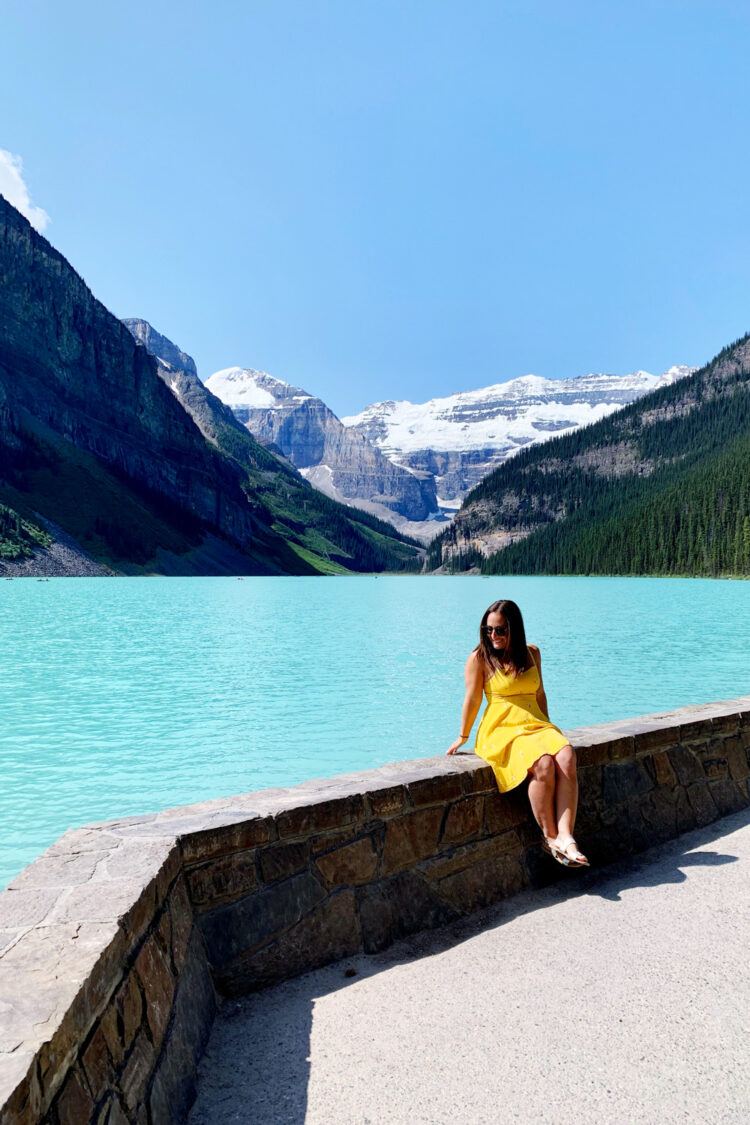

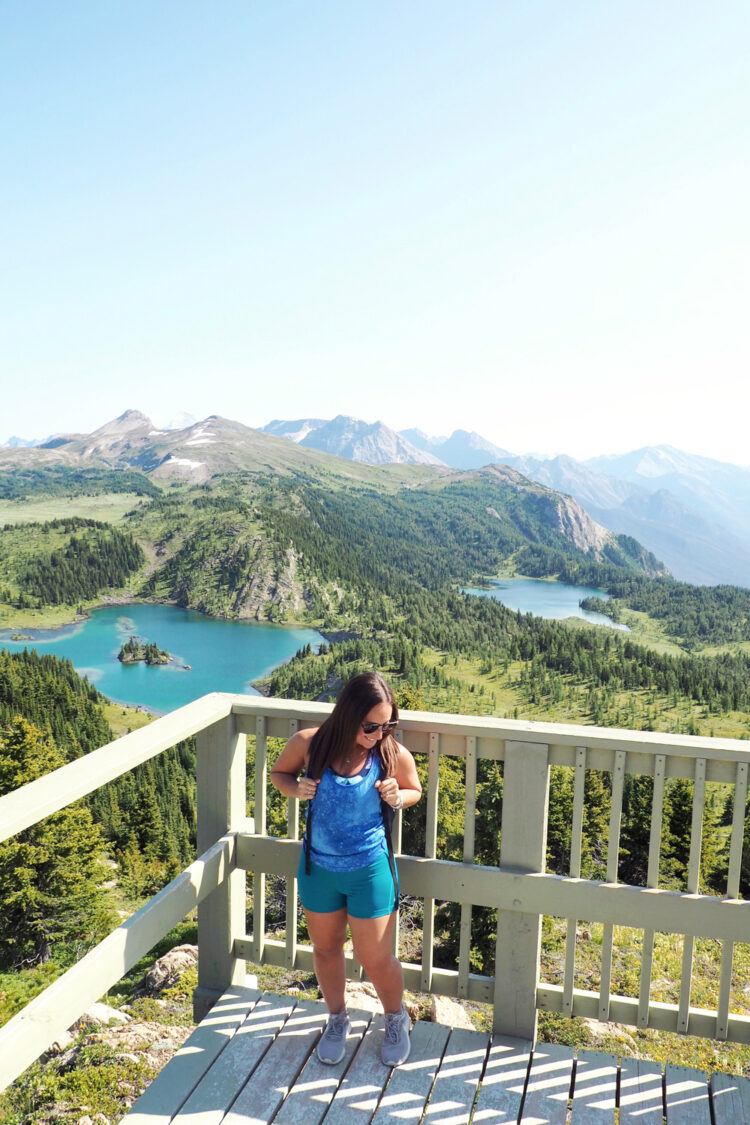






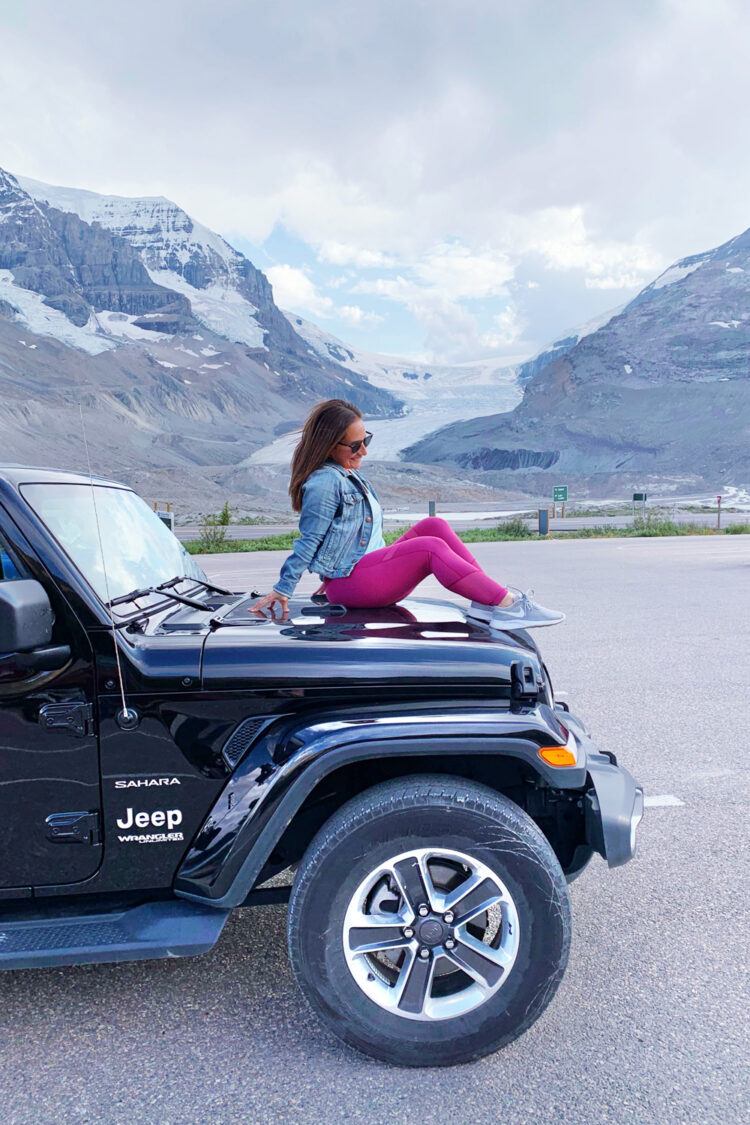



















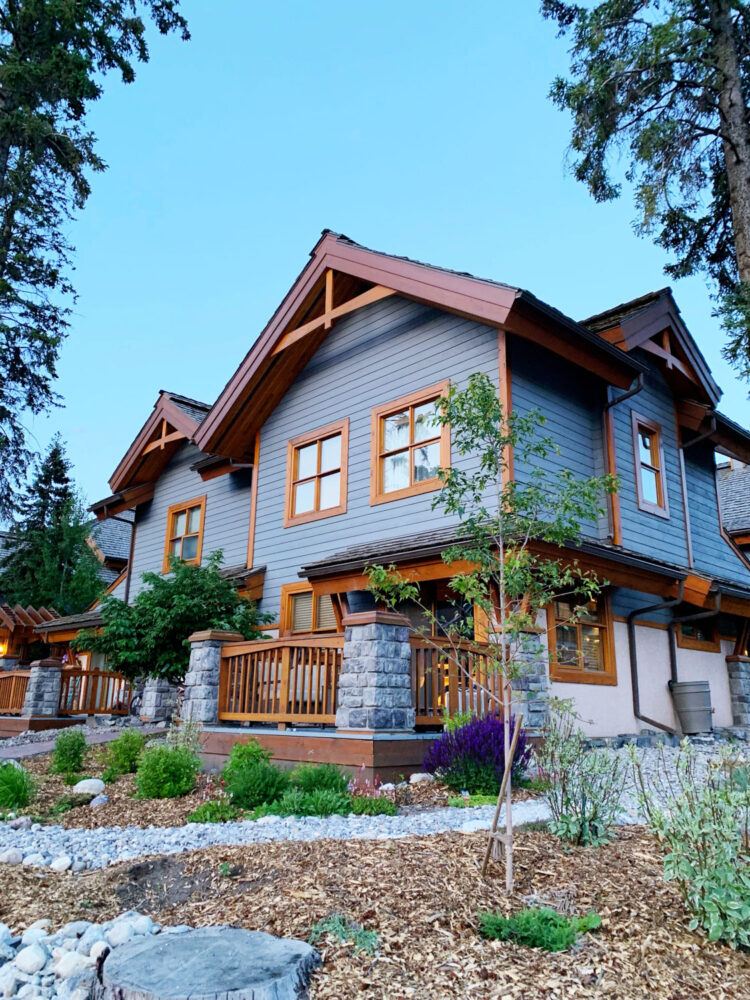

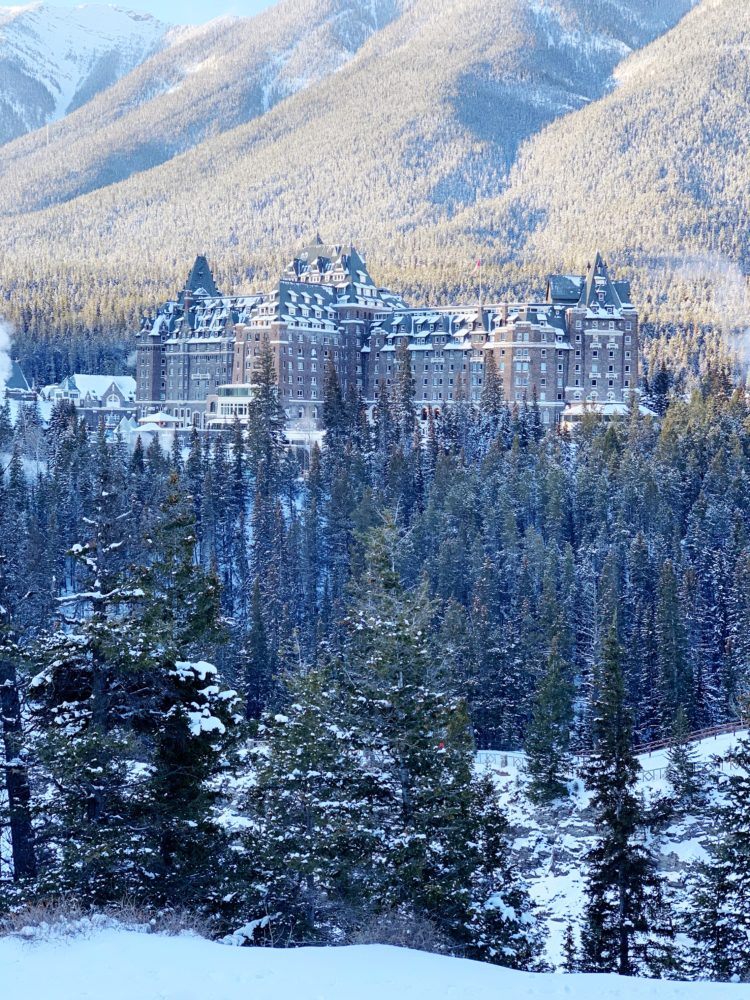




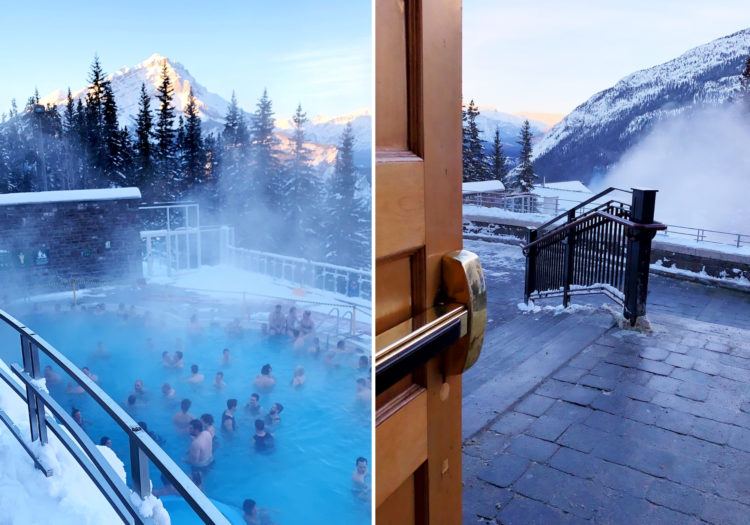



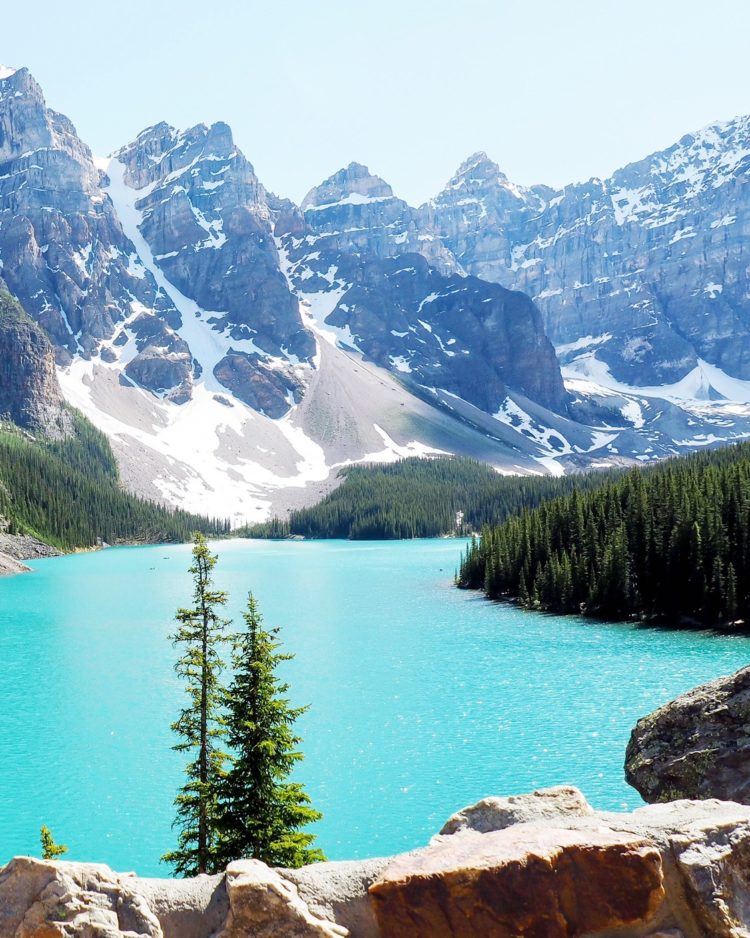









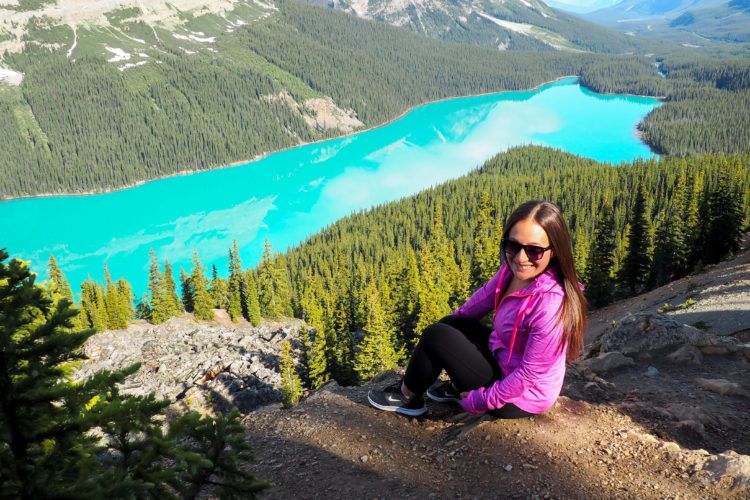
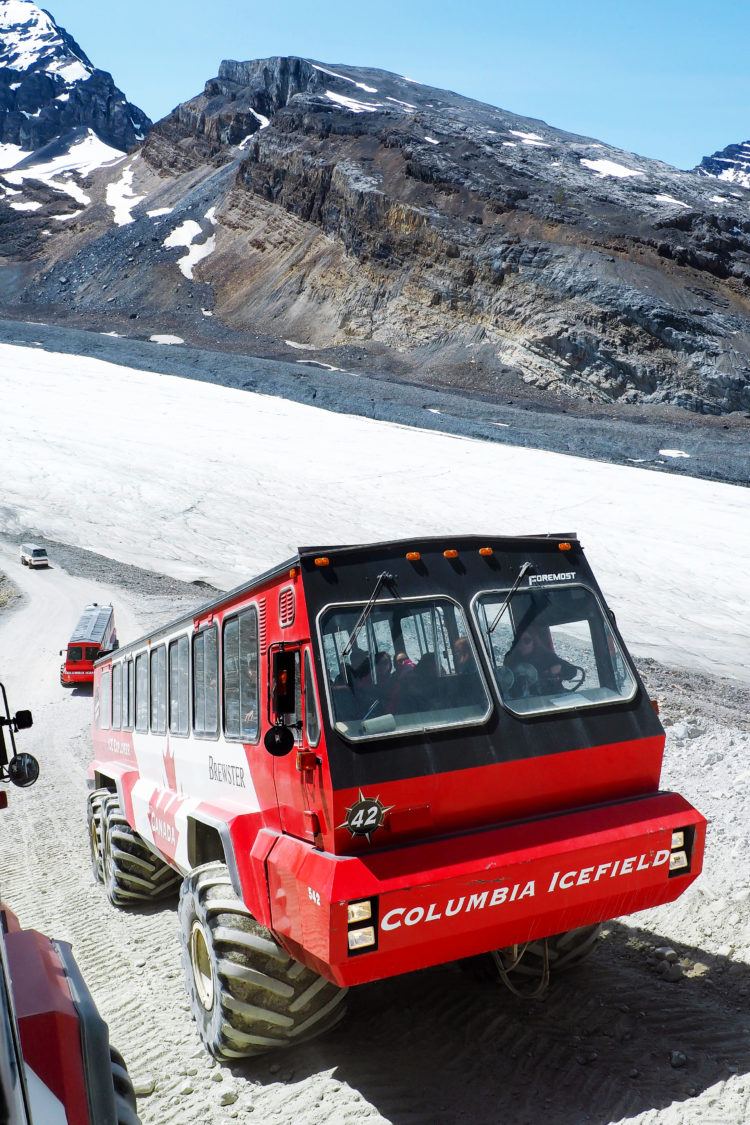

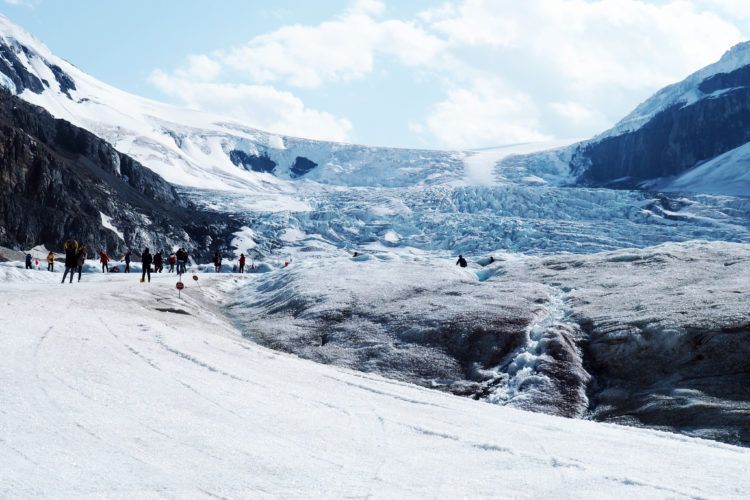









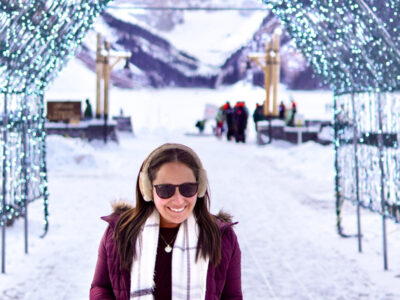
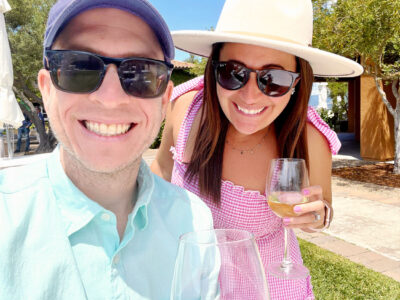

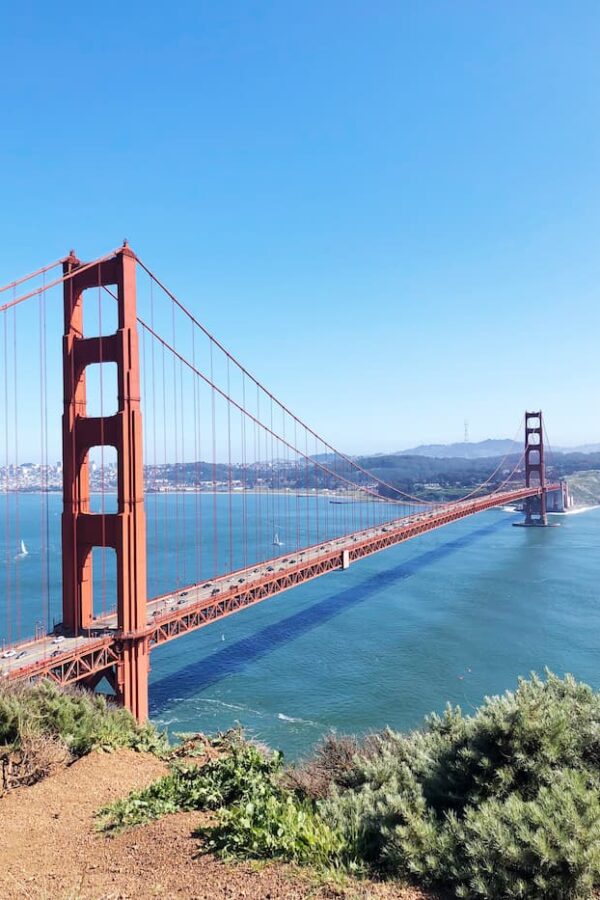
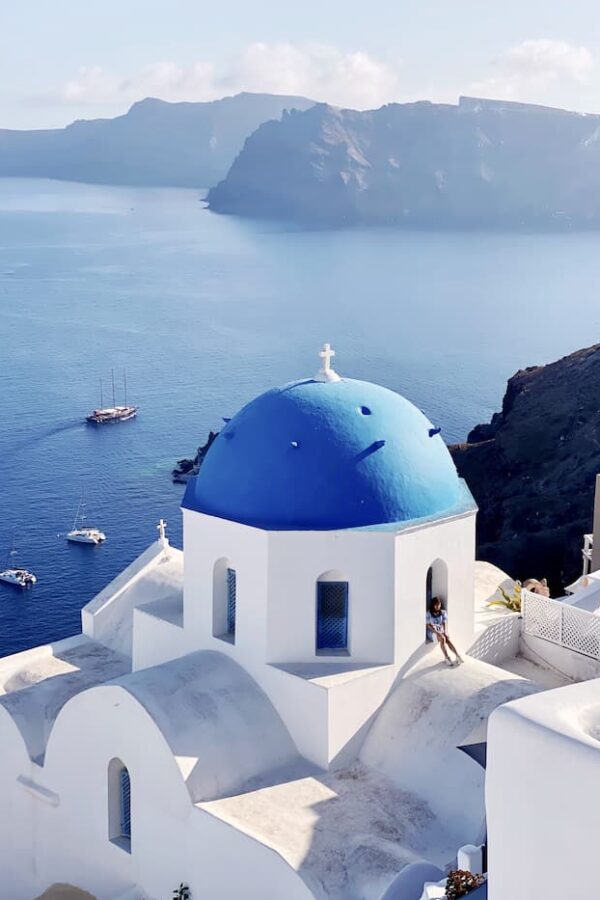
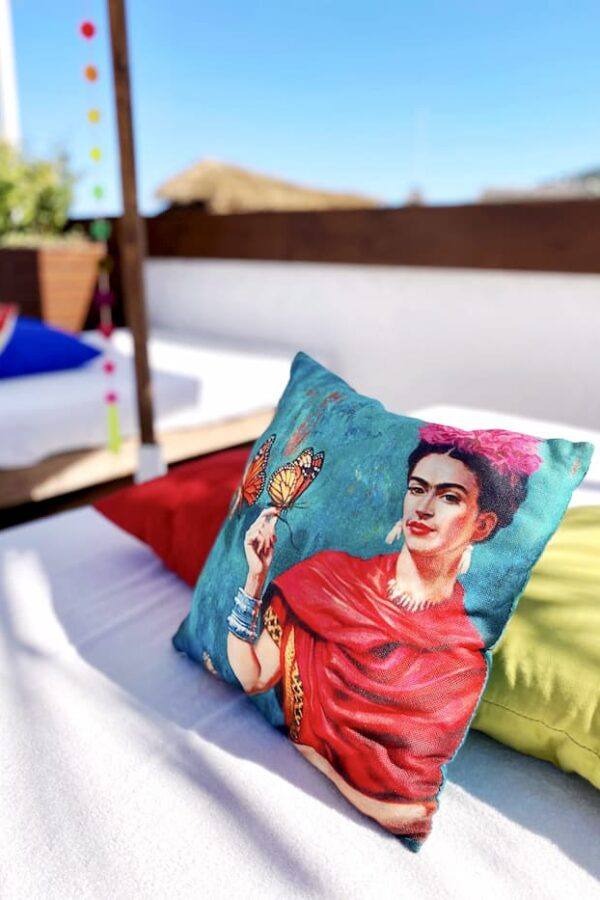
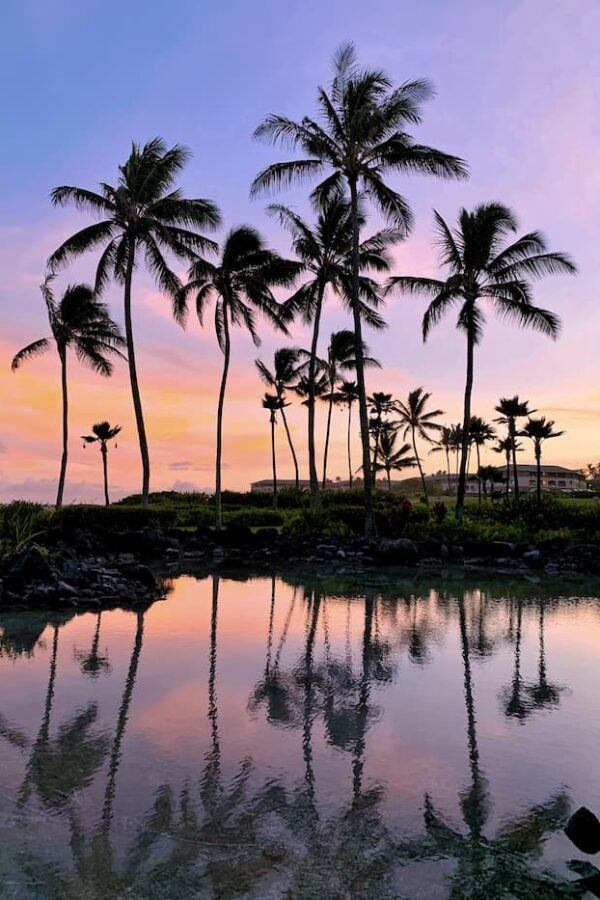

I primarily recommend this because Lake Louise gets INSANELY busy, so if you’re trying to beat the crowds, it’s best to go in the early morning. 🙂